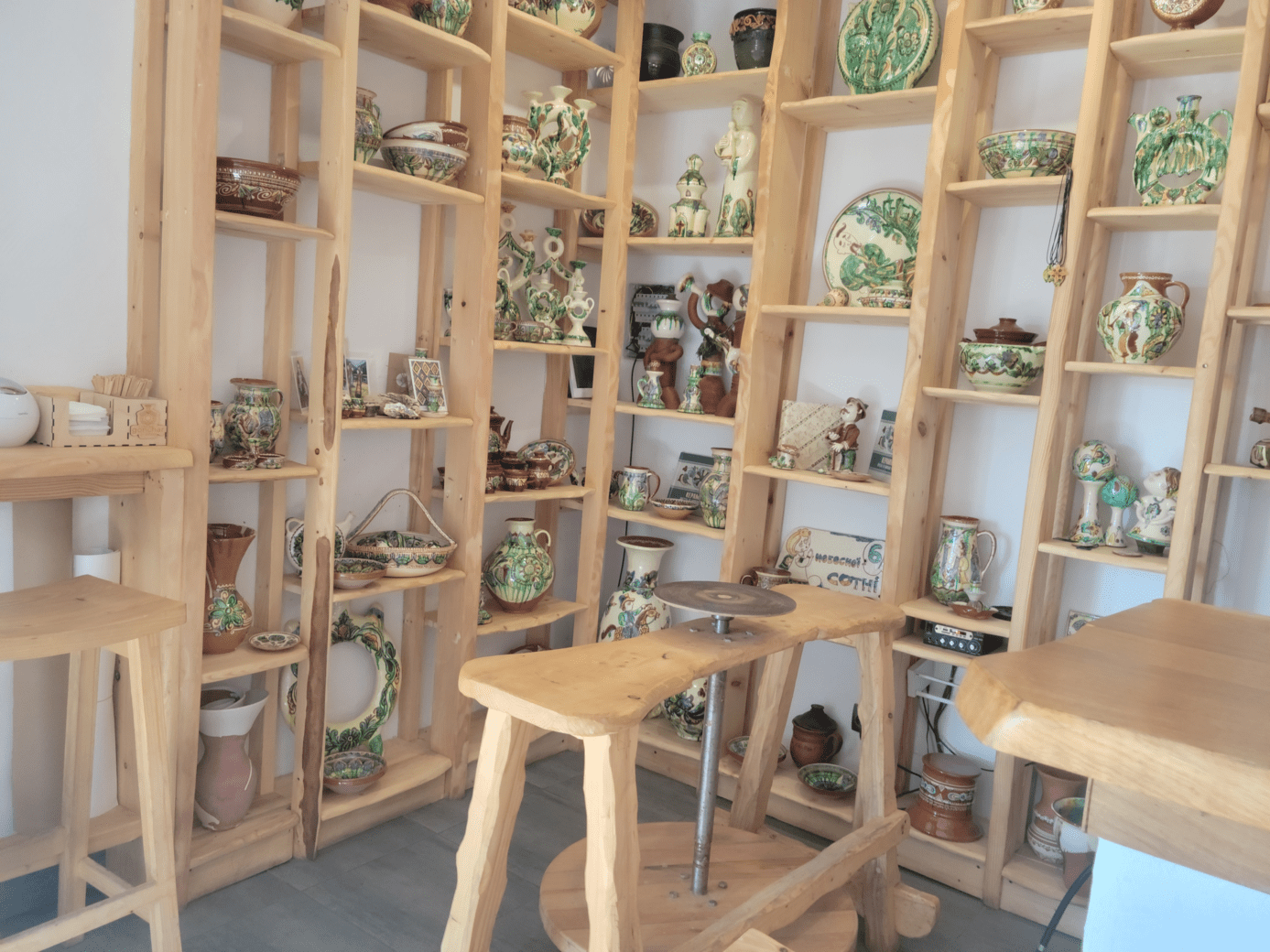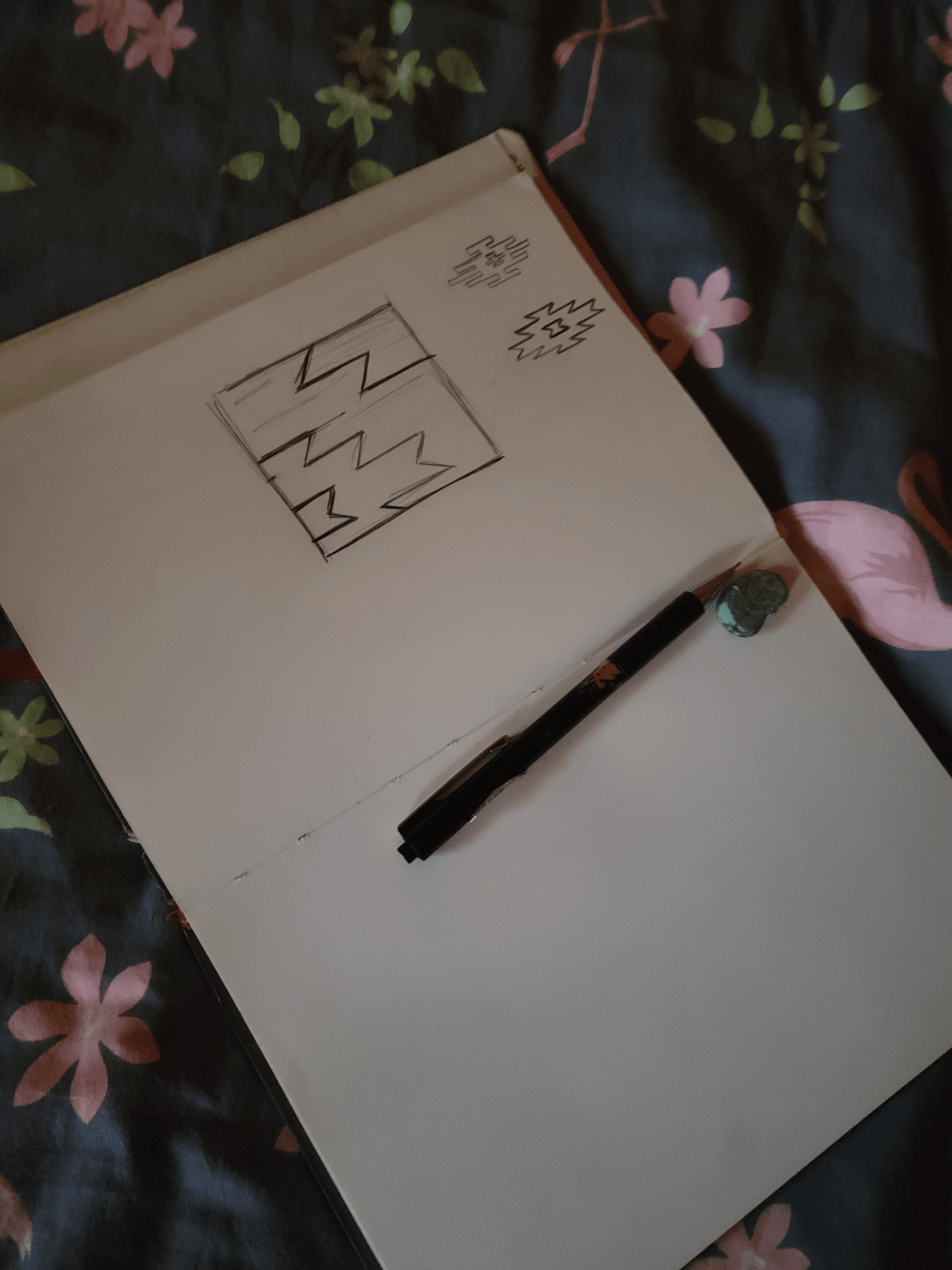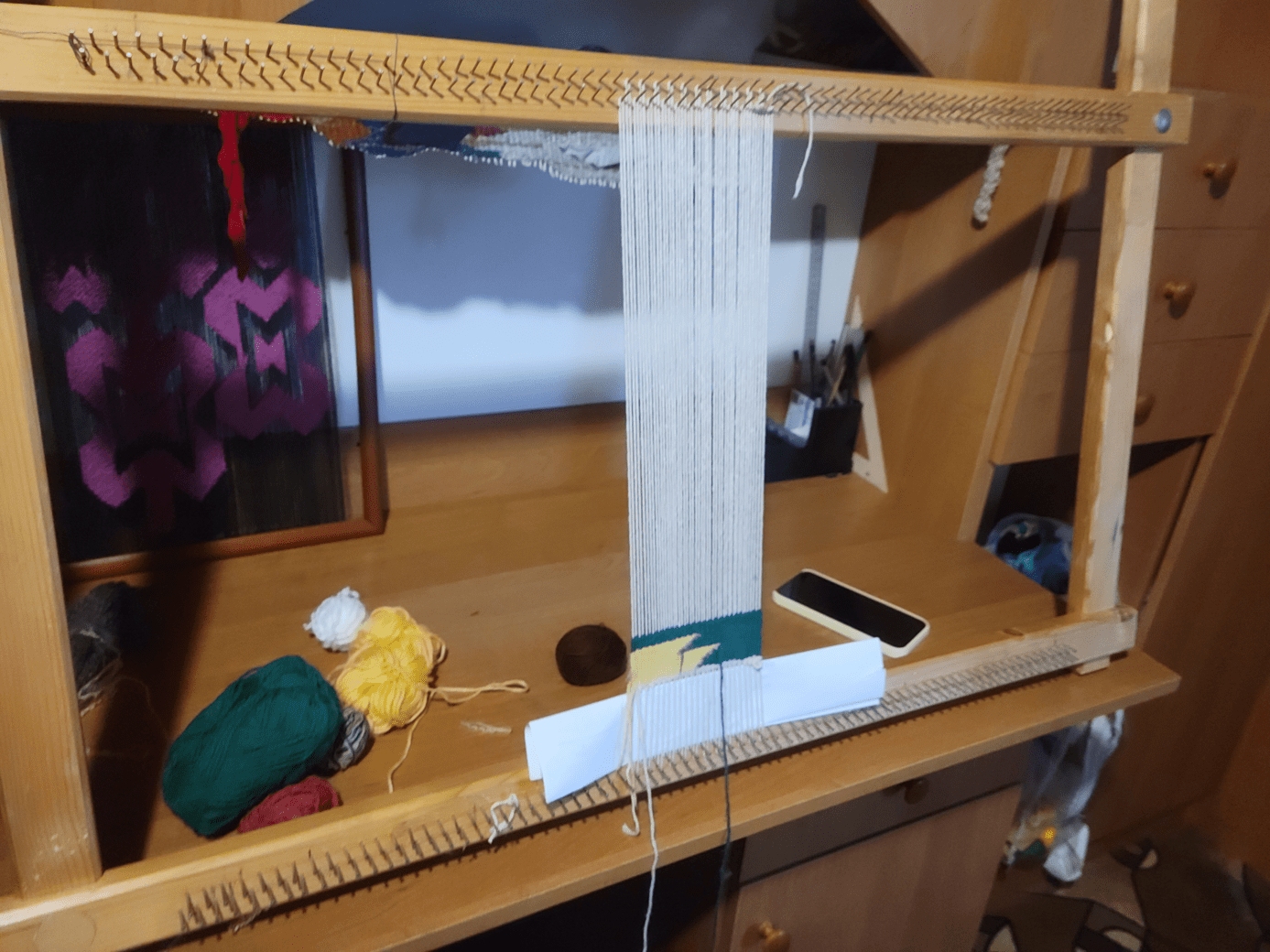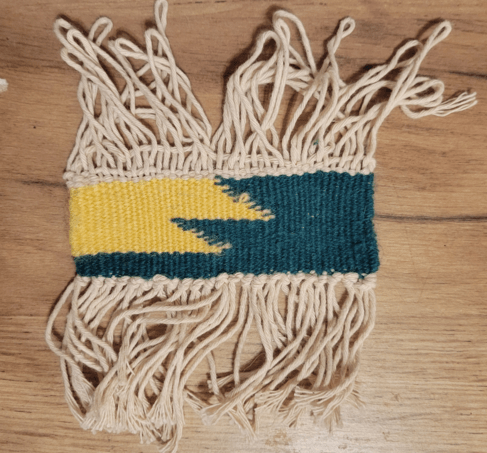Kosiv Weaving
As mentioned in my Fieldwork page, I was delighted to have the chance to visit with a weaver, Bohdana, in Kosiv in July 2023. Bohdana is an immensely insightful person. She was very informative and enthusiastically told me about Kosiv pottery, folk textiles (weaving specifically), cuisine, and the town itself. I’m honestly so grateful to Bohdana for putting aside an entire day to show me around Kosiv and introduce me to the local culture. Kosiv went from a small town that was barely on my radar to a cultural center that I genuinely love and want to visit again, especially for Gonchar Cafe…
Bohdana studied weaving at the university level and has worked as a weaver professionally. She is well-versed in the historical weaving styles in Kosiv, including on the frame loom and on the floor loom. Handwoven tapestries, like kylym, have long been a part of Kosiv textile culture and are kept alive today by weavers like Bohdana. While she knows and draws influence from historical Kosiv patterns, her focus has been on integrating modern designs with historical weaving techniques and patterns. In 2022, for example, she wove three tapestries on her frame loom that depict Ukraine’s past, current war, and prosperous future. In addition to weaving herself, she also has experience teaching beginners how to weave on the frame loom. I am not very familiar with Ukrainian weaving myself, so being able to meet with a Kosiv weaver was an amazing opportunity, and I learned a lot from Bohdana.
After touring Kosiv, Bohdana showed me a few of her tapestries and her frame loom. Her frame loom is made of several slim boards of wood for the frame and nails in the top and bottom boards upon which to warp the yarn. When she asked what I wanted to weave, I asked if she could think of any simple patterns that were Kosiv-based. Since I was learning about Kosiv textile culture for the first time, I figured it would be interesting to see how Bohdana would go about designing a simple Kosiv-inspired tapestry. And she delivered quickly! She sketched a geometric pattern that we could work on in green and yellow, the most prominent colors in Kosiv culture, thanks especially to their unique pottery.
Once she had sketched the pattern and picked out the green and yellow yarn for the design, she set up her frame loom and started warping white yarn. A true marker of her expertise was how quickly she had the loom warped; if it were me, it would have taken much longer to have the warp ready. After warping the loom, she wove a few rows for me, showing me how she worked the green and yellow yarns into the white warp completely by hand. Her hands made the whole process seem so effortless and graceful.
And I felt so clumsy and awkward when it was finally my turn. I looked at her often for approval, and apologized profusely when I could not notch the yarn tight enough into the fabric. She tracked the pattern for me, telling me when it was time to switch colors; I barely noticed on my own. I was so busy trying not to miss a warp thread.
I’ve talked about this with knitters, like my mom, before. All of my crafts are done with my left hand on the material and my right hand holding the tool. Embroidery, sewing, crochet, nålebinding, bead loom weaving, even sewing on Bonnie… I always have one tool in my hand, no more and no less. One hand holds and controls the material; one manipulates the material through an indirect touch. When knitters ask me why I don’t also knit, I tell them that I can’t stand the feeling of two needles in my hand – and then they laugh and say, “try 4 or 5” or some other horrible number. But to not have a tool at all? This is also very odd. My right hand rarely interacts directly with the material, and it is usually positioned in a way to hold the tool, so to suddenly be left working with the materials with both hands is actually very odd. Where was the feeling of interacting with the material indirectly? Where was the structure needed for my right hand? My left hand was ready, but I felt utterly lost with my right hand. The sensations were startlingly off.
I’m certainly not the first crafter to say how difficult it is to describe tactile knowledge. I know what expect to feel when I craft, and weaving entirely by hand wasn’t it for me. It’s been a few years since I last tried knitting or any other craft that doesn’t require just 1 tool, and it’s easy to forget just how comfortable you are with your own craft in terms of muscle memory, etc. But trying to weave completely by hand and then going back to crochet / embroidery felt like going home in a sense. It was a forced realization that I should diversify more in the future, but also a gentle reminder of where my strengths in interacting with material lie.
My weaving was slow, and we were limited with time, but for just an evening, I lived in Bohdana’s tactile world. And it’s different from mine, and it made me nervous. But it was also a new sensation after years of not being challenged, and it made me appreciate my own crafts when I did return to them. So, my gratitude goes to Bohdana for showing me her hometown, her culture, and her own tactile knowledge!



